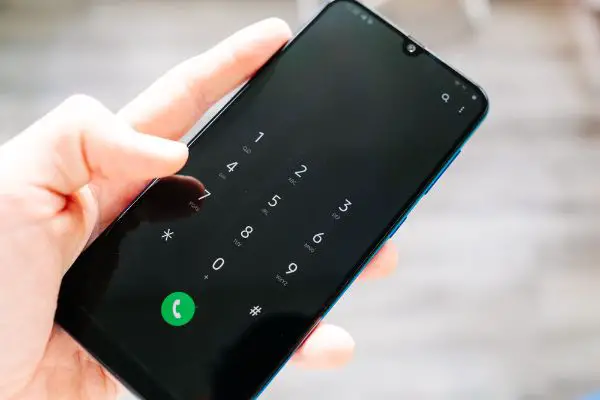Disclaimer: This post may contain affiliate links, meaning we get a small commission if you make a purchase through our links, at no cost to you. For more information, please visit our Disclaimer Page.
When you sign up for cell phone service, your provider will give you a new number. This number allows you to use your phone on their network. It is attached to both the texts that you send and receive as well as your phone calls. Your contract should tell you how long you need to remain on that network before you can leave.
This usually lasts from six months to a year or longer unless you choose a company that offers prepaid phones like Cricket.
Porting a number allows you to move to a different network and take your phone number with you. You should find out more about how this process works before you switch networks.
Table of Contents
What is a Ported Number & How Does it Work?
You probably saw television commercials from service providers claiming you can bring your phone with you when you change networks. They claim that you can use both your number and your old phone but also give you the option of upgrading to a better phone.
Some providers will even reduce the prices on new phones if you switch your number.
A ported number is essentially a phone number that you bring with you. Have you used the same phone number for years and want to change providers but worry about updating all of your contacts? When you port your number, your phone number stays the same.
Even if you change phones, your contacts can still reach you at the same number. This is different from call forwarding. With call forwarding, you attach your phone number to a different number.
When someone calls the original number, it forwards their call to a different phone. This comes in handy when you want to receive phone calls at home or work. If you plan to take your number to a new network, you should port it.
Why Should You Port Your Number?
A big reason why you should port your number is when you get poor service at home or anywhere else you go. Not all networks offer as much coverage as others do.
You may find that you get spotty service at home or that your phone doesn’t work when you’re in certain cities. Porting your number lets you get the service that you need without losing your number.
Saving money is another reason to port your number. Some providers charge high fees of $100 or more per month. You can switch to a different carrier and pay as little as $25 a month for service.
Mint Mobile and other providers offer discounts if you pay for a year of service in advance too. Other reasons you might port your number include:
- You plan on traveling abroad and want to keep your number.
- You want to use your old number with a virtual phone service.
- You have more than one number you use for work and want to switch to a virtual option.
- You are no longer happy with your current carrier.
- You want to take advantage of the cheaper phones that are available when you port your number.
How Does Porting a Number Work?
When you port your number, you need to inform your old provider that you plan to leave. You will then give your new provider some info about your old plan such as the number you have and your billing address.
The provider should handle the logistics and let you know when the process will finish. Some providers make the porting process even easier to save you some time. They ask that you bring a copy of your most recent bill and answer some questions before they begin.
What Happens When a Number is Ported?
When you port a number, you automatically transfer your cell phone service from one provider to another. You can usually do this with a mobile number but not a landline.
To port a mobile number, you must pay the early termination fee if the provider charges one. This fee applies if you signed a contract that locked you to the network for a specific period and decided to switch providers.
Your old company will make you pay this fee before it gives up your number. The fee can range from around $25 to $100+ It often depends on how much time was left on your contact.
Providers will also require that you pay any past due balance on your account. Do not assume that you can port your number if you owe the company money. Some people try to port their numbers after they fall behind on their bills and find that no company can use their old number until they pay off that balance.
The old company can keep your number but cannot block you from using your phone on a different network. If you cannot port your number because of debt, you will need to change numbers. Some providers may also reject you as a customer because they see you have a balance due.
Does Porting a Number Automatically Cancel Service?
Porting a number allows you to change networks and providers but does not always cancel your old service. A good example is when you have multiple numbers on the same account.
Let’s say that you and your partner/spouse both have service through one company. When you port your number, you transfer that number alone to the new company.
You will still have an account with the old company. The process may take mere minutes, especially if you visit a local phone store. Your provider will port your number and call it to make sure it works.
This process can take much longer though and take up to 24 hours. Keep in mind that your old provider will hold you responsible for any money that you owe.
If you switch providers in the middle of the month before your next bill is due, you still need to pay for your service. On the other hand, the company has no obligation to refund money if you pay in advance and don’t use a full month of service.
Can You Port a Number Without Canceling Your Contract?
You should never cancel your contract before you port your old number. If you cancel your contract, the provider can take your number and place it back in its database.
By the time you ask the new company to port your number, it may no longer be available. You should make sure that your current phone or the one you plan to buy is compatible with your new network.
It’s also helpful to pick up a new SIM card if you need one to make sure you have it when you change networks. No mobile phone provider will allow you to use a phone without a working SIM card.
Once you choose a new provider, find a copy of your bill or statement and take it with you to the shop. Let them know that you want to change to their network and bring your old number. The new company will install your SIM card if you didn’t do so and complete the porting process.
Most providers will verify that the number works and contact your old provider to let them know that they completed the steps. This allows the old company to cancel your contract.
You may find yourself in a situation where you want to keep your contract but port your number. This can happen if you have two or more devices on your account. You might have a personal phone you use for family and friends and another that you use for work.
Another example is when you have a mobile device like a tablet or a hotspot that you use at home along with your phone.
Your old provider will not cancel your contract unless you take all of your numbers and devices to a new company. If you only want to change one number, you can take that number to a new company and keep your old contract.
How to Tell if a Number Has Been Ported
Cell phone providers allow you to port your number as long as you remain in the same metropolitan or geographic area. You might live in Chicago and switch to a carrier in one suburb without having any issues.
If you plan to move to a different state or across the country though, you usually cannot port your number. Providers may not have service in certain areas and will not let you move your number there.
Once you port your number, use a different phone to call it. As long as your phone rings, you ported the number. You can also check the provider’s website and find out if there is an option for checking numbers. Many providers allow you to enter a number and see if it is on their network.
Not only do you want to make sure your number appears on the website of the new company, but you should verify that it’s no longer listed with your old company. Try asking a few different friends and loved ones to call your number just to make sure it works.
Bottom Line
Porting your number allows you to transfer your service from one provider to another and use your old number. You can keep your old phone or buy a new one from the new company. Porting a number is easy and can help you save money and upgrade to a better phone.


